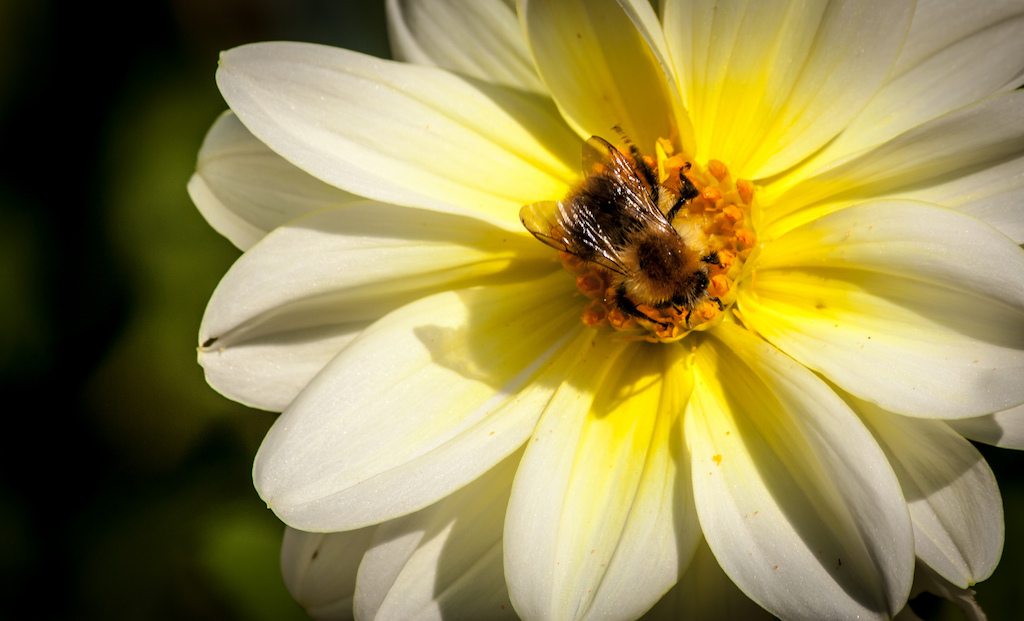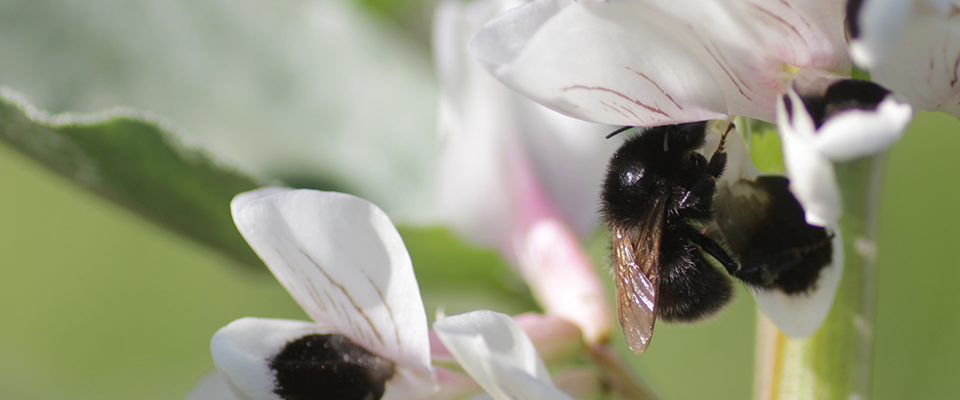Until recently, no one really knew where all the bees were going. Even as major news outlets covered Colony Collapse Disorder (CCD), scientists didn’t yet understand the mysterious phenomenon decimating honeybee populations. A number of factors were considered—parasites, pesticides, even cell phone tower radiation. But no one could explain why the food system’s crucial pollinators, instead of returning to their hives, seemed to simply vanish.
But a culprit has started to emerge: neonicotinoids, a ubiquitous class of insecticide. In 2012 and 2014, a group of scientists at Harvard published two studies that linked neonic exposure to disappearing bees. Subsequent studies found that these chemicals can also affect bees’ navigational abilities and fine motor skills. Though CCD may not have a single root cause, and though these findings didn’t fully explain it, it started to seem likely that neonics are at least partially to blame. Last year, the Environmental Protection Agency (EPA) was worried enough about imidacloprid, one common neonic, to publically consider limiting its use.
This week, the picture got even clearer. In a major study published yesterday in Scientific Reports, a group of researchers from the University of California at San Diego demonstrate that a common neonic profoundly impacts the way bees fly. And it starts to explain why, instead of dying in the fields, honeybees sometimes seem to disappear instead.
The two-year study focused on one neonic in particular, thiamethoxam (TMX), chosen by the researchers because of its agricultural omnipresence: it’s used on a range of fruits from apples to apricots, vegetables (potatoes, tomatoes, peppers, zucchini) and commodity crops (cotton, soy, and corn). In other words, it’s everywhere. And according to the study, it makes bees go haywire even in small doses.
Anyone who’s ever sprayed ants or roaches with a pest killer like Raid has surely noticed the disturbing way their bodies seem to wriggle themselves to death, writhing in a frantic spasm of limbs. James Nieh, one of the biologist co-authors of the study, says that’s a more extreme version of what happens to bees on TMX.
“Just like that cockroach twitching on the bathroom floor, it’s not moving in a coordinated way, even though it’s showing excitation,” he says. “The toxin binds to receptors in neurons that cause the insect to go into this frenzy, an example of hyperactivity induced in the immediate aftermath of the exposure. With bees, we’re not exposing them to toxic doses—but even at this sublethal dose they could encounter in the field, they have this momentary increase in activity.”
While TMX exposure amps a bee up, it also disrupts the neural pathways that connect a bee’s wing muscles to its brain. This result? A lot of mindless flapping. TMX-treated bees fly in a zig-zagging, chaotic pattern that rapidly depletes their energy stores. But after this period of wild activity, the scientists found, the amount of movement would drop precipitously. It turns out that TMX is not so different from stimulants humans use and abuse: there’s a rush, and then a crash.
The challenge for UCSD’s scientists was to quantify the change in bee behavior during the manic period. Bee flight is extremely difficult to track in the field, for obvious reasons: they’re tiny, and very busy. Even state-of-the-art radar systems can track bees for only about 100 meters.
In order to monitor them better, the scientists used a device called a flight mill, which was originally designed to study the flight patterns of moths. A flight mill is a small machine that somewhat resembles a 19th-century zoetrope; scientists attach an insect to a rotating inner needle, tracking flight duration, velocity, and distance as it whirls around in circles like a tetherball. What looks like a fairly crude device is actually more sophisticated. The needle levitates magnetically, so there is virtually zero friction as the attached bug flies.
“This increase in flight duration and distance is likely not beneficial because, at similar doses, TMX and other neonicotinoids cause flight disorientation,” the authors write. “Bees that fly more erratically for greater distances may thereby decrease their probability of returning home.”
In another phase of the experiment, bees were chronically exposed to TMX. They reacted differently, becoming sluggish and flying shorter distances for less time. And so the pattern of behavior emerges: after TMX-dosed bees depart on a mad spree, they can’t muster enough strength for the long journey back.
Now that we know farms all over the world are using a chemical that harms not just pests, but the pollinators they rely on, where do we go from here? According to Nieh, dropping neonics from the food supply entirely may not be feasible, but the findings are stark enough that we should rethink our approach.
“The world is dependent upon cheap production of food to feed people, and it’s not realistic to say that no pesticides will be used at all,” he says. “I think what we can do is talk about more effective, integrative pest management strategies, where we look at the problem and ask what we can do to use pesticides a little as necessary. This would reduce cost to the farmer, would reduce environmental contamination, and would be better for the bees.”
He says strategies like crop rotation and polyculture hedgerows can dramatically reduce the need for pesticides—an approach that, as we reported recently, has started to be adopted by some of the world’s largest food companies—as can the introduction of beneficial insects like ladybugs and praying mantises.
“This is not important just for the bees, it’s important for the security of our food,” Nieh says. “Whenever we as humans depend upon a single thing to control pests, pests will evolve to become resistant. That’s already becoming true even of certain neonicotinoids. We really need to take a holistic approach for our future and for the the future of the bees.”











